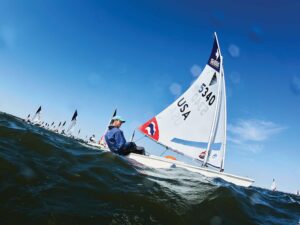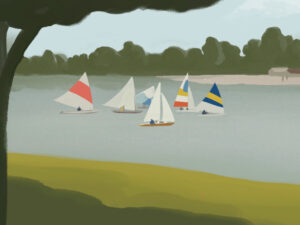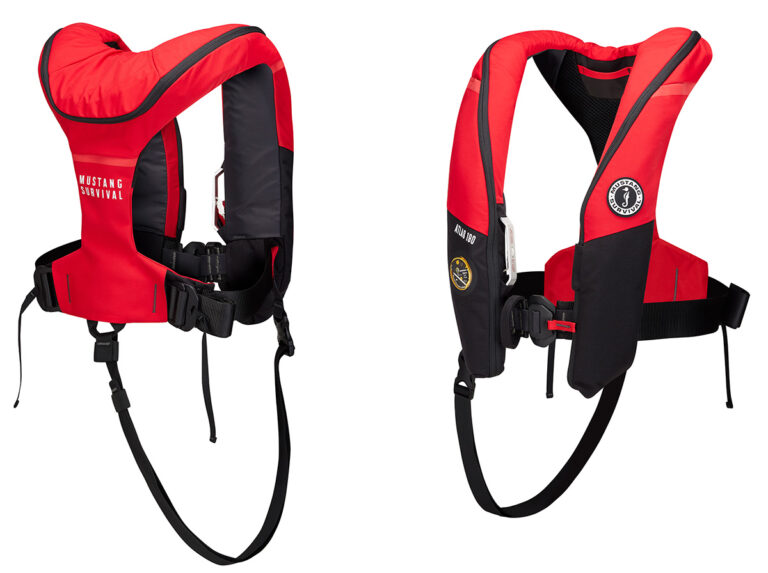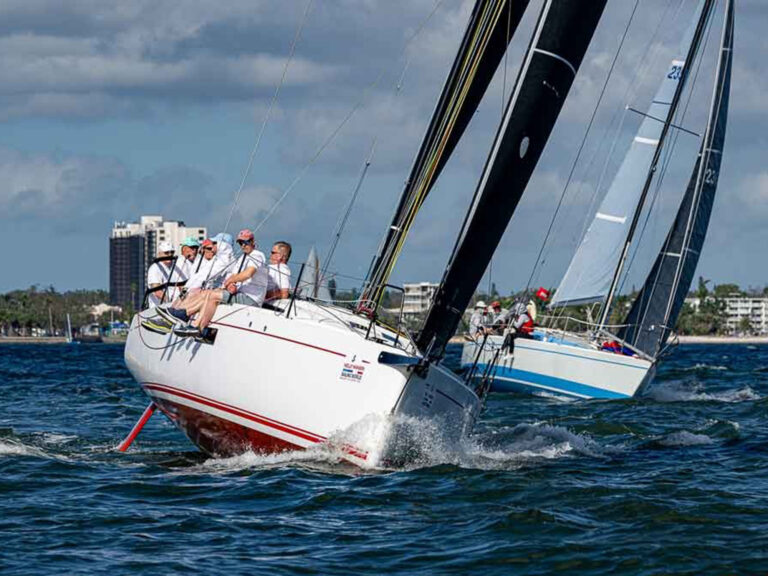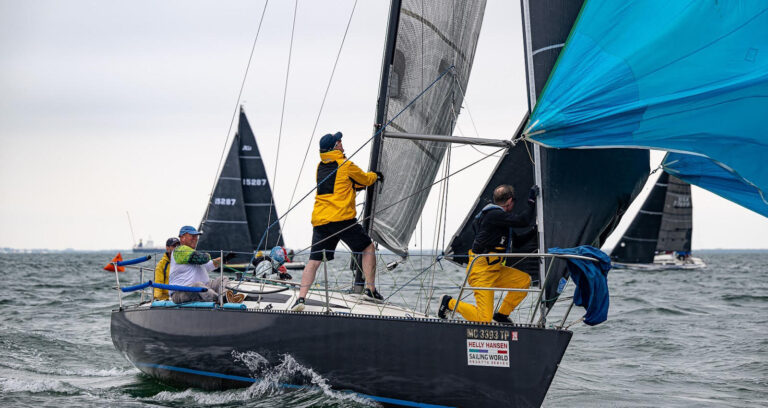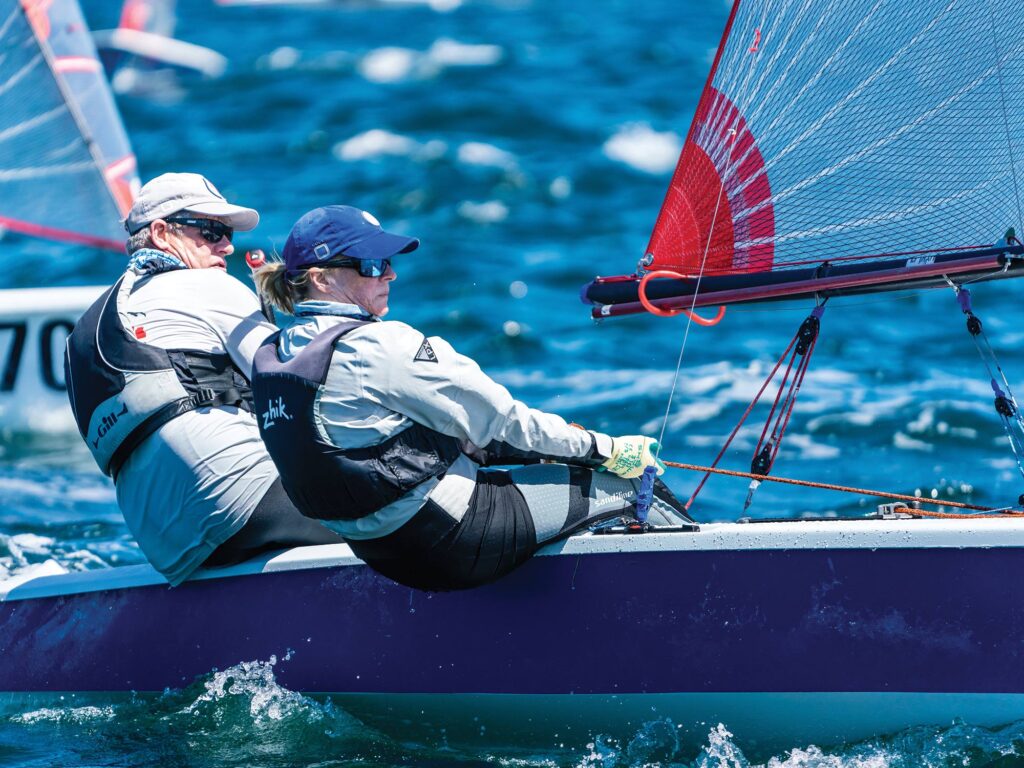
It never changes—that sinking feeling when you cross the line first but don’t get the horn. Dang, I guess we were over early. I knew it was close….
This is my reality after the second race of the 2024 Tasar Australian Nationals. All the pre-regatta anxieties came to the fore. Did I prepare enough? Am I good enough? Am I fit enough? Am I too old? Or was it just an error of execution that could be easily corrected? Going into a major event, it is normal to wonder how it is going to go. There’s always more preparation we could have done, and the fear that maybe we are not that good after all is never far away. I have found that one of the keys to calming these doubting voices is to build a playbook that suggests specific ways to prepare and sail for the venue. Some of these rules are derived from the venue itself, some from the nature of the competition, and some from our state of mind.
That OCS ends our first day of Tasar competition in Melbourne, Australia. My partner, Libby, and I had a bad first race going, but we managed a good comeback to finish eighth. It was a little shaky, but we dodged a bullet. Now we add an OCS to the score line. But luckily for Libby and me, this is only the pre-regatta and not the World Championship. As this reality sinks in while sailing back to the beach, I see more clearly that we can use the next few days of racing and training to get to Worlds form, and that’s exactly what we do.
In the first race of the Nationals, we had started toward the (favored) right side of the fleet, then tacked right toward what I thought was more wind. This was a disastrous strategy, and we were in the 30s approaching the top mark. This was Golden Rule No. 1: Understand the venue. In this case, the shore is to the left, causing the wind to bend and often increase. So, it pays to go left upwind unless the wind is definitely going right. This also means avoiding the temptation to tack back early. We used this basic approach for the rest of our time in Melbourne. It didn’t work every time, but it formed an effective tactical framework.
Being way behind in Race 1 of the Nationals (which I am calling the pre-regatta), at the start of the run, I am somewhat desperate. I jibe onto port shortly after the mark, find a clear lane, and carry on all the way to the port layline, plus a little bit more. We then jibe and come in fast to the left gate, passing 20 boats. Golden Rule No. 2: The run is where we can make huge gains, so find space and go fast, and approach the gate from an edge.
In the second race, we execute a risky start toward the favored left side and sail a good beat to round in the lead. We then sail defensively to hold on for the win, until the non-horn. But we’ve learned another great lesson, which brings us to Golden Rule No. 3: The starts are pivotal. With more than 100 boats and an 800-meter line, we can’t do well without good starts. And we can’t afford to be Black Flag or OCS.
At this point in the regatta, we have raced for only one day, and we already have three powerful lessons that can set the groundwork for our regatta strategy. Even though our score line looks erratic, I can start to feel a plan coming together.
The second day of the Pre-Worlds (Australian Nationals) brings good breeze and three great races. We have decent scores, but we have two key breakthroughs. First, we get very systematic with our pre-start routine, including regularly checking the wind direction, doing multiple practice starts, and moving to different parts of the start box. Enter Golden Rule No. 4: Win with superior preparation and rigor before the start.
On this day, we have mixed success downwind, both passing and getting passed, but we figure out a fairly reliable way to position ourselves downwind relative to boats around. Building on Rule No. 2, we sail in clear air downwind and try to find space to rip but defend on the tighter reaches.
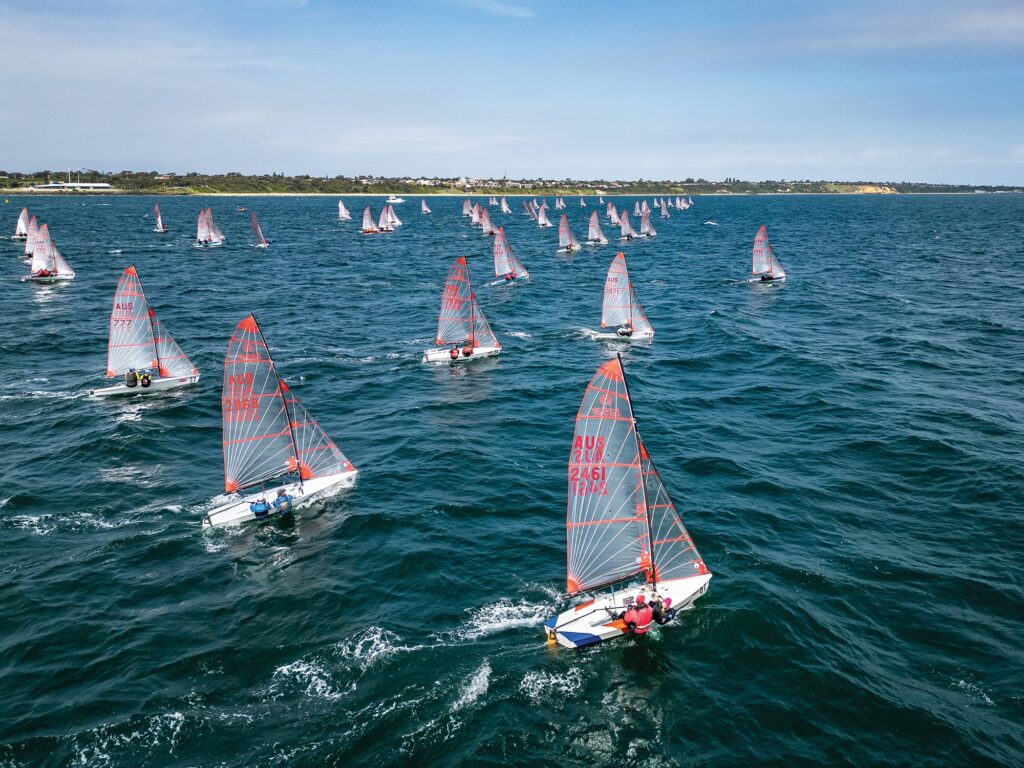
Day 3 of Nationals is canceled because it’s blowing 25 and the waves are steep and huge. It’s a bit of a disappointment, but it’s clearly the right call to preserve the fleet for the upcoming Worlds. But we have not sailed in those conditions for a long time (maybe never?), so we (I) decide to go for a brief sail after racing is called for the day. A couple of other US boats venture out on Port Phillip Bay as well. We have a little session, and it is indeed pretty exciting. We make it back to shore without mishap, so we achieve our goal of becoming familiar with extreme conditions. If we have similar conditions during the Worlds, I feel as if we could at least get around the track, which brings us to Golden Rule No. 5: Be mentally prepared for any condition.
We ended the pre-regatta in fifth place overall. Not bad for a warm-up regatta, but there were clearly other teams that were going to be hard to beat, including the three Aussies and one American team that had beaten us, as well as a few others who didn’t beat us but were fast. The stage is now set. Can we eliminate unforced errors and apply the golden rules we’ve developed during the Nationals?
In the three days between the Nationals and the Worlds, we mostly rest. But we also spend a day trying to get a little faster upwind because we all know that a little upwind speed can make the whole race a lot easier. Because of the rough sea state, we try adjusting our diamond shrouds a little tighter than normal. We also try using a bit of vang upwind to improve our footing in overpowered conditions. In the end, we are consistently among the fastest boats upwind, measurably improving during the week. That gets us to Golden Rule No. 6: Never stop trying to get faster.
As the regatta unfolds, it looks as if our little rule book is working. There are lots of Black Flags, OCS penalties, and other high scores in the first three days of racing. The conditions are mostly medium air, but the beats are tricky, with both sides sometimes paying off huge. Somehow, we manage to get good starts and pick the right way most of the time, and we benefit from a couple of good comebacks. This gives us top-eight scores going into the lay day, with five more races scheduled. We have a slight lead and a good discard, but a few good boats are still well within range. Can we keep our composure? Would the rules keep working?
The lay day promises a late leisurely breakfast but also a change in the weather. It gets rainy, cold and windy, which means no beach day for us, but the next day is also too windy to sail. The suspense is really building now—in my head, at least. But I’m trying to stay relaxed….
Three races are scheduled for the final day of the regatta, with an early start and 10 to 16 knots in the forecast. With the second discard coming into play after nine races, the math gets somewhat dizzying. I try to tell myself, Just go out and sail well. It’s not a golden rule, but it’s a good thing to do anyway.
For the first start, we line up just to weather of the midline boat, have a killer acceleration, and tack after a minute when we get a little header, easily crossing the fleet. This is going really well, I tell myself. But a few minutes later, the wind keeps shifting left. Now we’re on the outside of a left shift. We round the first mark in the 30s, get back to around 20th at the gate, and finished 13th. It’s a good comeback, but we’ve also eaten a discard with two races still to be sailed. The pressure is mounting. We need two more error-free races.
With the second discard coming into play after nine races, the math gets somewhat dizzying. I try to tell myself, Just go out and sail well.
In the next race, we again get a really good start, and we are fast. We are near the top, but we cover the wrong boat for a while. In the end, we get through to third, with our closest competitor just ahead of us. If my math is correct, we are 1 point ahead of Chris Dance and Peter Hackett going into the last race, losing the tie-breaker. So, it’s now who-beats-who. I think we have locked second overall, but I’m not 100 percent sure about that. Anyway, we are playing for first!
OK, so what’s the plan for the last race? “Oh yeah, stick to the rules.” Do the practice starts, check the wind, confirm the settings, remember to breathe.
Again, we get a good start in the middle and hold on starboard. Near the layline, Libby sees Dance and Hackett coming across on port, three lengths behind. We cover them once. They tack, so we tack, then we tack onto their air a second time, and that was it for their race. We round the first mark sixth and finish third, which is good enough for the win—earning a big sigh of relief.
Sometimes we prepare well, we get lucky breaks, and it all just happens. But for the Tasar World Championship, having our Golden Rules keeps our heads clear and free from the mental clutter of all the things that can go wrong. The rules give Libby and me a positive mental framework that promotes good sailing and, most importantly, clear heads.

